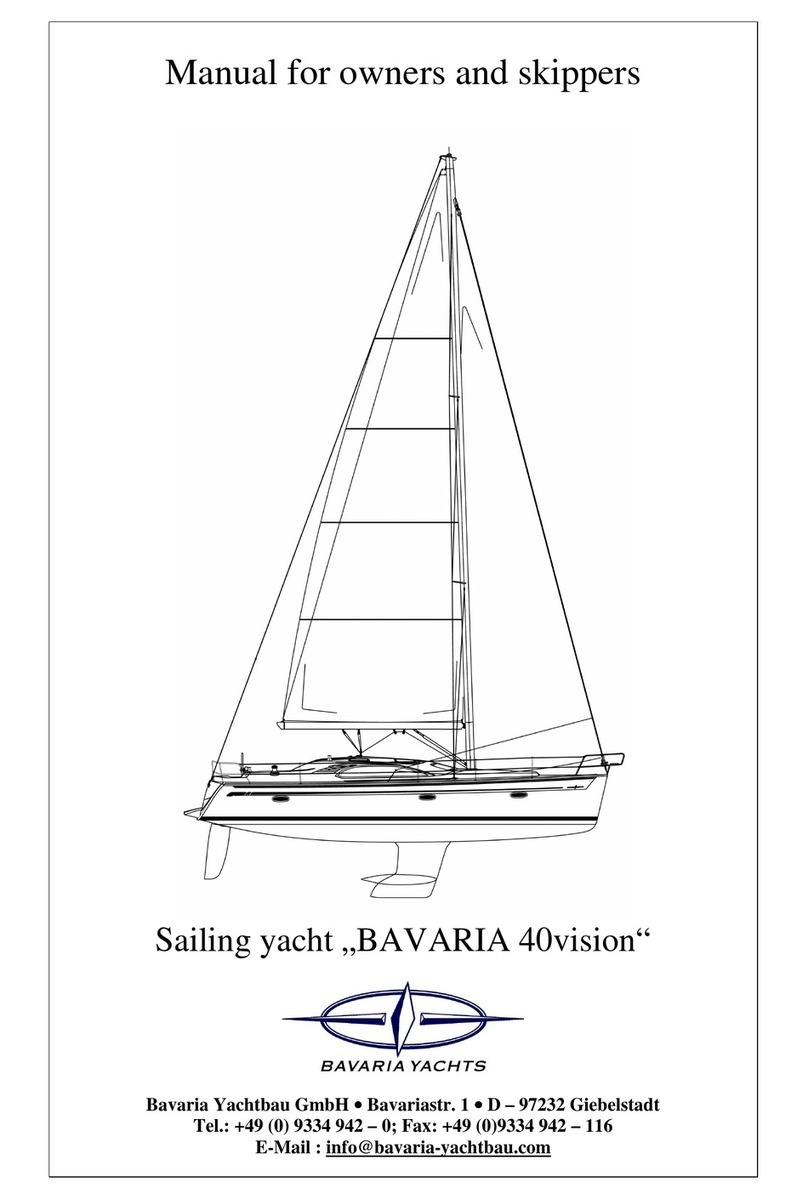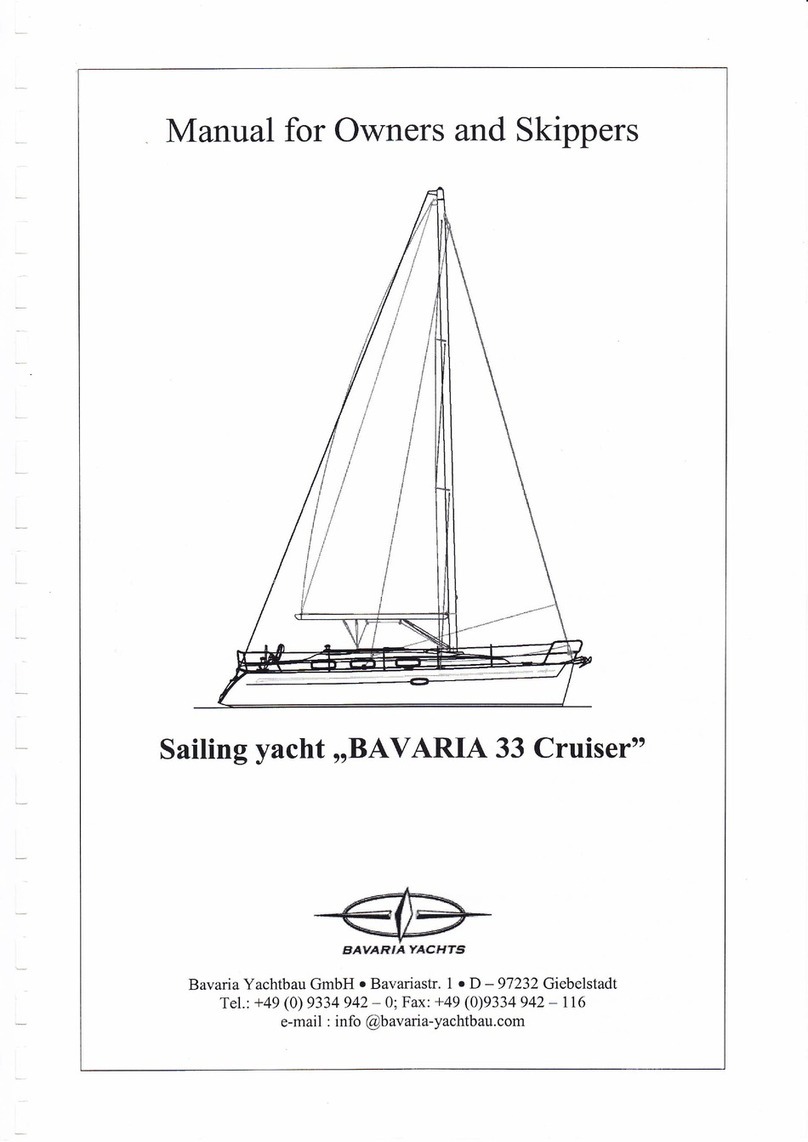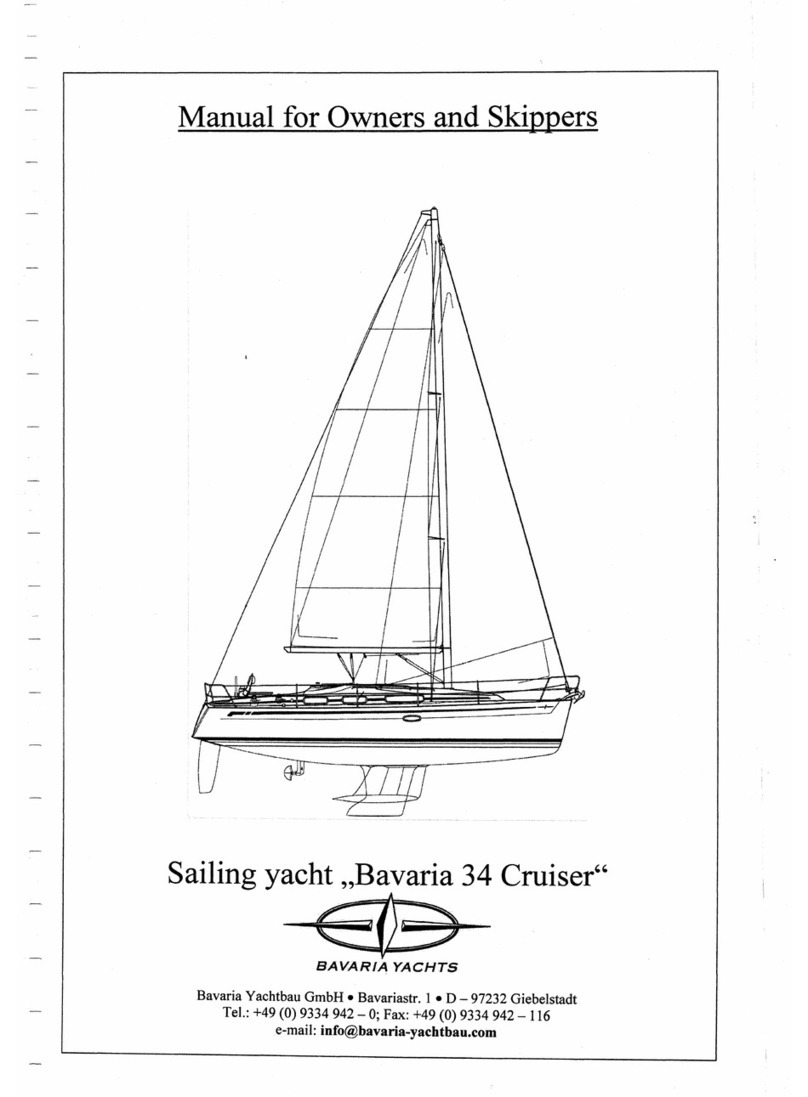
Bavaria 32 Bavaria Yacht Bau GmbH
(39)
– 17
2.3 Steering gear
2.3.1 Description of the system
The rudder is a suspended, balanced hydrofoil midship rudder . It is operated by hand from the steering
wheel at the steering post in the cockpit. Transmission of power is realised by means of rope pulls and
fairleads to the rudder quadrant. With the autopilot (option) an electric motor installed.
2.3.2 Rudder blade and rudder bearings
The rudder blade is a profiled one. It consists of a FRP-body. The rudder post is made of a sea-water
resistant aluminium alloy and is laminated into the blade. The post runs in two easy-going and special
rudder bearings. The rudder is fixed by a mounting clip at the upper end of the post that also serves for
the keeping of the rudder tiller.
The mounting clip is additionally secured with a straight stud bolt on the rudder post.
The rudder bearings used by BAVARIA YACHTBAU are self-setting bearings. Since rudder bearings
are subject to wear and tear they should be inspected and maintained regularly.
Emergency tiller
The emergency tiller is stored in the starboard locker seat.
In case of emergency remove the steering wheel, the rudder quadrant for rope pulls and the quadrant for
the auto pilot (option).
The emergency tiller to be mounted and secured at the top of the tiller wheel.
The steering wheel got a built-in brake, which you can fasten. Make always sure that this brake is not
tight especially when sailing with the auto pilot. This would mean an overload for the electric motor .
The socket of the steering gear is integrated into the deck’s form. On the socket there is the casing of the
wheel hub. A chain is laid over a tooth-wheel of the hub. Both the rope pulls are run from the rudder
quadrant via fairleads to the ends of this chain, where they are fixed crosswise by means of wire-rope
grips, protected with an elastic covering.
Each end of the rope pulls has one shroud adjuster each fixed at the rudder quadrant. It is recommendable
to check these ropes from time to time and to retighten if necessary.
2.4. Bilge pumps, bilge pipes
The chain locker is made watertight towards the yacht. It is self-bailing through two holes in the skin.
All BAVARIA yachts have got a self-bailing cockpit. The drain wells are placed at the rear and lowest
part of the cockpit and are led outboard through the transom with hoses.
Attention
Check regularly and repair if necessary:
- ti
ht hold of the mountin
cli
on the rudder
ost
Attention
Please ensure a suitable bearing lubrication of the necessary parts of the
rudder installation with water-proof lubricants (or Teflon).
Bearing clearance has to be avoided and can be adjusted at the top bearing.
The post must have no clearance but should not need heavy movements.















































